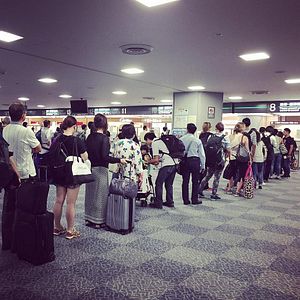On November 27, Japan’s Lower House passed a long-disputed new regulation letting more foreign workers into the country. Passed, or rather forced through, for the opposition parties went to extremes to try and prevent the law from being accepted. That made for a strange scene indeed: the liberal-leaning opposition is against a new immigration law, and the conservative ruling party forces it through. What might be the problem with the bill?
The proposed new visa system has been heavily criticized by opposition parties and experts, even though it seemingly tries to act on the severe labor force shortage in Japan due to the rapidly aging society and falling birth rate. The plan targets blue-collar workers in 14 sectors for two kinds of visa statuses, allowing hundreds of thousands of immigrants to spend either five or 10 years in Japan. So far, only highly skilled professionals have been granted long-term visas, such as those in the medical sector, but now newly accepted professions include analysts (not specified), consultants, R&D professionals, trade and finance professionals, financial product developers, construction workers, agricultural workers, and healthcare professionals. These sectors have been identified as sectors suffering the most from labor shortages.
According to analysts, many questions loom with this new policy. For one, exact numbers are yet to be confirmed, which causes concern, especially with regards to social infrastructure. There have been cases in the past when rushed immigration policies placed a heavy burden on local communities and foreigners alike due to the lack of social infrastructure. A notable case is the major influx of nikkeijins in the 1990s. Nikkeijin is a term used for South American citizens of Japanese descent, who formed diaspora communities mainly in Brazil and Peru. A 1990 regulation provided a favorable visa for those having Japanese ancestry to work and settle in Japan. The unforeseen boom in migrant workers going to Japan, however, met with issues upon arriving, as the educational system was not prepared for nikkeijin children. The lack of language teaching (not to mention the inability to socially include them) became an apparent problem for the families. This case might be a good lesson for the current government, as the newly introduced plan involves a visa for a 10-year long period that allows family members to join the applicant. The ruling party, however, has yet to address this issue of accommodating migrants’ children into Japanese schools and society.
Another complaint from critics is connected to the many problems in the existing trainee program. There has been growing awareness about the exploitation and mistreatment foreign nationals are experiencing in the Technical Intern Trainee Program that Japan employs. Such abuse manifests itself in considerable overtime work, underpaid foreign employees, and the holding back of contracts or even passports. A similarly unsuccessful situation arose during the final years of the 2000s, when the Japanese government established a program for accepting healthcare professionals, mostly nurses and caretakers, to replenish the dwindling number of workers in the healthcare sector. The applicants in this program had to go through several extensive examinations, but when accepted, the local hospitals and medical institutions restricted their scope of activity, and allowed them to do only simple procedures far below their expertise, or even the tasks during their examinations.
However, not every labor-related program in Japan has faltered. The JET program (Japan Exchange and Teaching Program) has outdone itself in this regard, as it now has an internationally good reputation. The program provides an opportunity for foreigners to teach the English language in Japan’s many educational institutions, including kindergartens and high schools. Japan accepts applications from 40 countries, and the program has been successful for decades.
There is little indication that the above issues were considered when proposing the current immigration bill. The deliberation process was exceptionally fast: 17 hours and 15 minutes (including the periods when the opposition party member boycotted the committee meetings), instead of the minimum 20 hours. There was a data mishap too: During the sessions the Justice Ministry provided false statistics about foreign trainees and why they left their jobs. That motivated the opposition to raise their voices by tabling a no-confidence motion against Justice Minister Takashi Yamashita, who was in charge of the bill. The ruling Liberal Democratic Party voted down the motion, and the bill passed. The new visa structure will be implemented in April 2019.
It is undeniable that Japan is in dire need of a solution for its labor shortages and aging society, and that the solution is most likely to involve welcoming a foreign workforce. However, concerns about labor rights under the past and future system are real and valid. As the date of the 2020 Tokyo Summer Olympics is getting closer, it is no wonder that the Abe administration is in rush to relieve the labor market, but the method and way of execution will play a prominent part in determining the success or failure.
Emese Schwarcz is an international relations expert specializing in Japanese politics. She is currently responsible for managing Japanese relations and organizing events regarding East Asia at a Hungarian think-tank, the Antall József Knowledge Center.

































